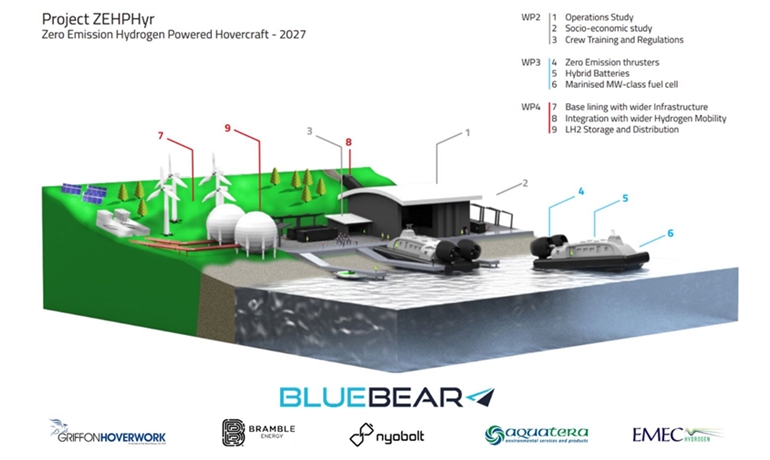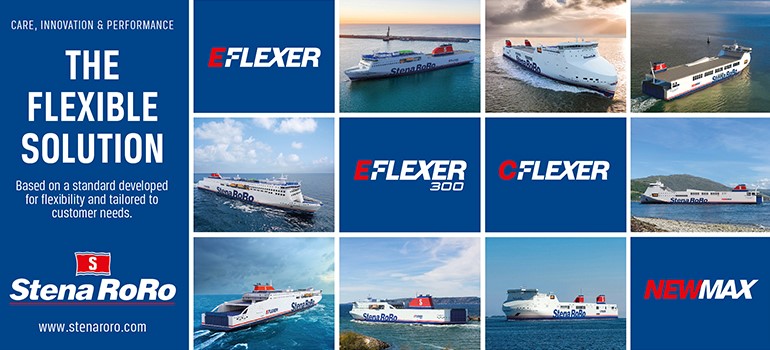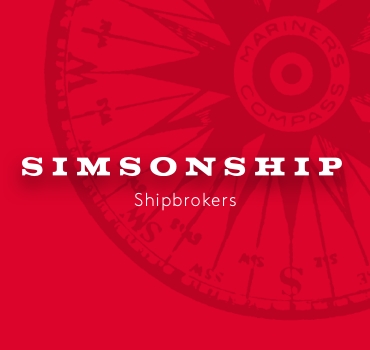
Project ZEHPHyr - A zero emission hydrogen powered hovercraft
A consortium, led by Blue Bear, has been awarded £569,067 in funding from the UK Government to help decarbonise the maritime sector. Project ZEHPHyr, Zero Emission Hydrogen Powered Hovercraft, is an 8-month feasibility study which aims to de-risk the key barriers to zero-emission hovercraft operations.
These barriers include – operational barriers (socio-economics, crew training, regulations, life cycle impact), technical barriers (hydrogen-based propulsion system) and availability of hydrogen infrastructure (production, storage, distribution, bunkering, integration with wider infrastructure/mobility).
The central innovation in the project is investigating the feasibility of replacing diesel engines in today’s hovercraft with a zero-emission hydrogen propulsion system and in doing so, pave the way for follow-on phases of development, where the novel propulsion system will be demonstrated on 12-seat and 80-seat hovercraft. Introduction of zero-emission hovercraft into commercial service is expected after 2025.
The project team consists of a best-of-breed consortium consisting of Blue Bear (Lead), Griffon Hoverwork Limited, Bramble Energy, Nyobolt, Aquatera and the European Marine Energy Centre (EMEC).
Anmol Manohar, Head of Strategy at Blue Bear said: ‘Blue Bear’s quiet and efficient IPM (Integrated Propulsion Module) thrusters are ideally suited to help ushering in zero emission hovercraft operations. We are excited in bringing our pioneering aerospace technology into marine applications such as this. Winning this grant also shows Blue Bear’s strength in leading and managing large and complex programmes ‘
Mike Biddle, Executive Director-Net Zero, at Innovate UK said: ‘’Congratulations to the team behind the ZEHPHyr project. We wish all CMDC round 2 winners good luck as they embark on their projects to decarbonise the UK’s maritime sector, creating a supply chain for the future and boosting growth. The government’s clean maritime demonstration competition, part of the wider UKSHORE programme funded by the Department for Transport, will stimulate innovation around the country to ensure the UK is at the forefront of this transition to make maritime greener”.
Dr Vidal Bharath, CCO at Bramble Energy said: “Bramble Energy are thrilled to be working alongside this consortium of innovators to deliver a viable zero emission solution for hovercraft operations. With our revolutionary PCBFC technology and our core expertise in the design of fuel cell stacks, Bramble will go from 10kW (today) to 200+ kW (in Phase 2 CMDC) which will bring us one step closer to realising Net Zero in the Maritime sector.”
Sai Shivareddy, CEO at Nyobolt said: “We are delighted to be part of this project for which fast charging, high power batteries and power electronics will be needed to extract the most from the fuel cell and deliver it as and when needed.”
Gavin Barr, Managing Director at Aquatera said: “We are delighted to be joining the technical team to further advance H2 technology into the marine transportation world. As an island-based company we are uniquely aware of the challenges presented to delivering innovative transportation-based projects alongside lifeline services in the marine environment. We bring substantial previous experience in H2 research and development together with applied technology projects in islands and look forward to building relations with the Isle of Wight community as we look to support delivery of this exciting project”.
Matt Storey, Hydrogen Development Manager at EMEC said: ‘’EMEC will support the concept design of the onshore infrastructure including hydrogen production and refuelling, building on our expertise from our green hydrogen R&D programme and demonstration assets. Exploring the feasibility of hydrogen powered hovercraft expands the hydrogen use case and closely aligns to EMEC’s focus on decarbonising the maritime sector through green hydrogen and derivatives.”
Ken Gregory, Senior Electrical System Engineer at Griffon Hoverwork said. ‘From its onset fifty years ago, the hovercraft is still seen as a great example of disruptive innovation and that continues today, demonstrating the unique technology in specialised applications around the world. This project continues to build on the technology of the hovercraft, not only adding to their flexibility but also by taking its unique attributes into the next generation of transportation, harnessing the disruptive technology of a green, alternative fuel propulsion systems. We are excited to be working with our partners in this venture.’
Oct 26 2022


















